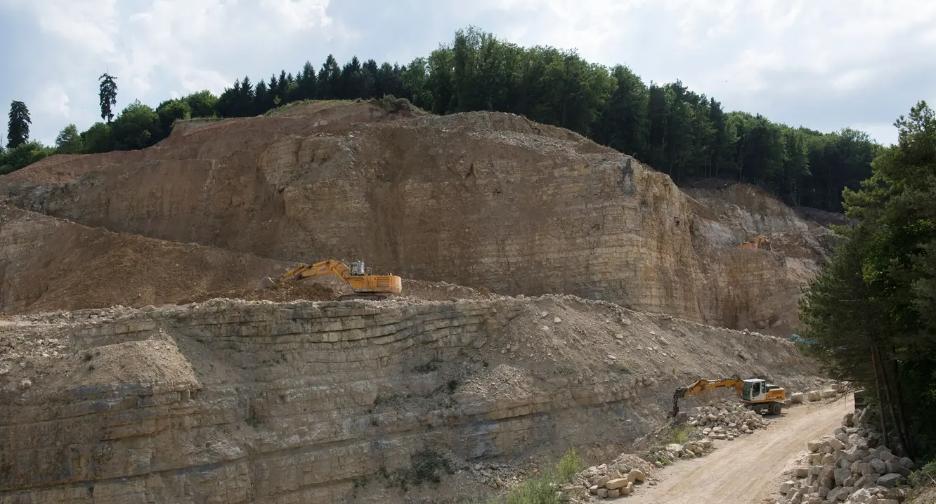The quarry is to be expanded as a landfill – now the population can comment on this
Currently, only a quarter of the annual volume of inert materials in Aargau can also be disposed of within the canton. Another landfill is now to be added in the Melliker quarry.
A landfill for inert materials is to be built in the quarry in Mellikon. This type B material is non-recyclable mineral construction waste and industrial waste. According to experts, these do not dissolve, are not combustible and do not biodegrade.
With the landfill, the degree of coverage for inert materials in Aargau would increase to around 60 percent. The documents for the participation process in Bad Zurzach will be open to the public until the end of June.
The Melliker quarry is currently being filled with unpolluted excavated material, i.e. type A material. Steinbruch Mellikon AG was allowed to mine limestone and marl limestone until the end of the 2050s. At the same time, the quarry is to be continuously filled and recultivated in several stages.
From 2075, the area should again be part of the agricultural zone. Now the operator also wants to dump inert materials. This is primarily material such as bricks, ceramics, Eternit and glass that are produced when buildings are demolished.
The material is to be stored in an oversized kind of bathtub
The canton has already designated the Melliker quarry as a type B landfill in the structure plan. The municipal council of Mellikon also supports the project. With the change in the material, the operation, the control of the quarry and the drainage concept also change: Mixing of the landfill and clean seepage water must be prevented.
The inert materials should therefore be deposited in a trough sealed at the bottom and on the side walls, similar to a bathtub. The natural rock is covered with a mineral, permeable sealing layer and a so-called geotextile or secured with an asphalt seal. The clean water that pushes out of the slope is drained away. The material is deposited on the covering layer.
The water that seeps through is drained off through a separate pipe. Samples are taken from the landfill seepage water before it is fed into the so-called receiving water or the ARA.
What remains the same, according to the local newspaper “The Embassy”, is the amount of mining, the mining material, the refilling volume and the phasing of the mining and recultivation, but also the final design approved in 2013, the cleared areas and the associated replacement afforestation and the ecological balance.
Depositing inert materials costs around four times as much
After the public edition, the population has the opportunity to object. The adapted usage plan with a modified BNO will be launched in autumn, which the municipality will have to approve.
This is followed by the building permit process. The operator will not be able to store inert materials for the first time until early 2024 at the earliest. By the early 2070s, 3.25 million cubic meters can be filled in this way. That is up to 95,000 cubic meters per year, which means a maximum of 75 truck trips per day.
It’s worth it for the operator: According to “The Embassy”, co-owner Roger Umbricht said that dumping this material costs about four times more than clean excavation.


